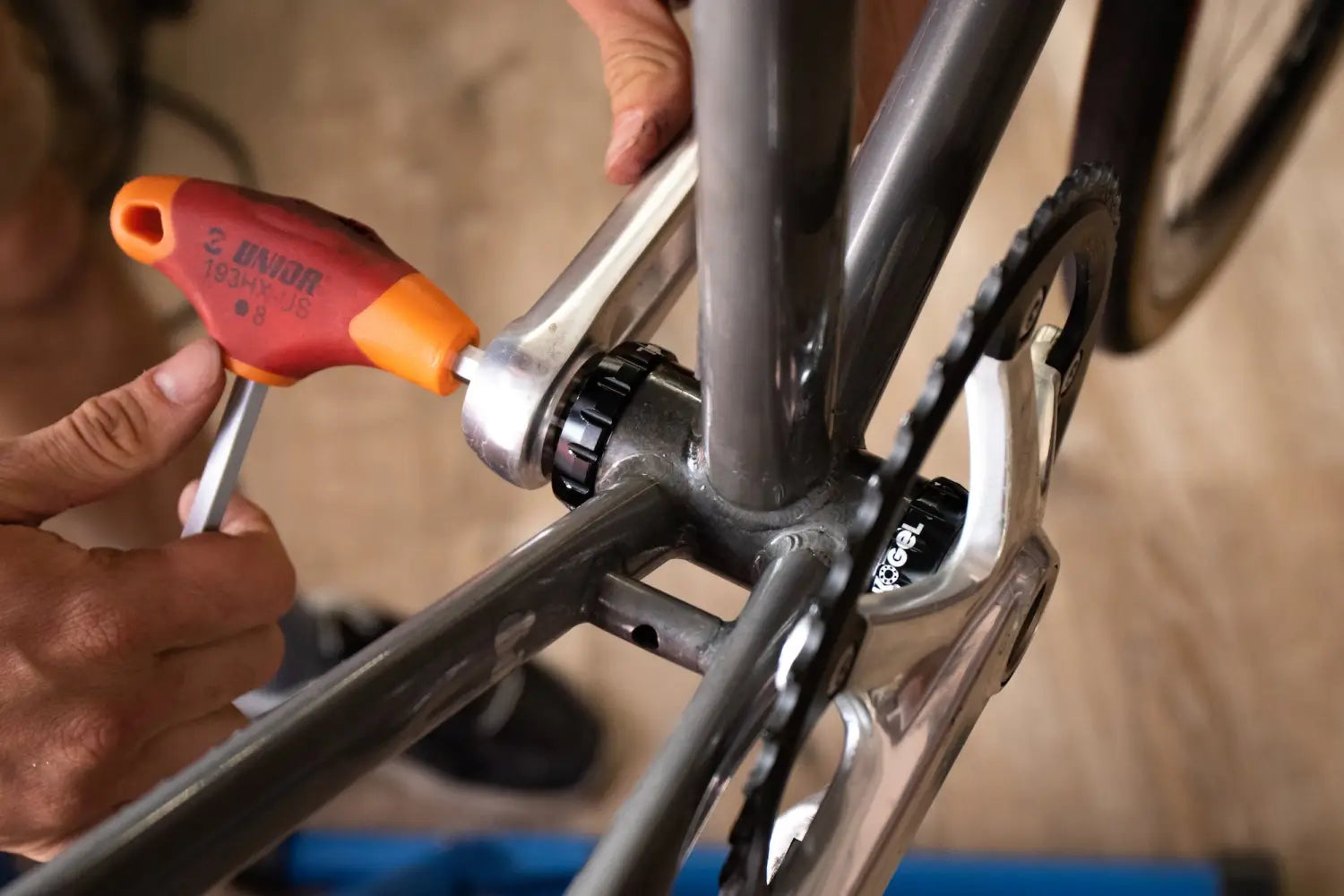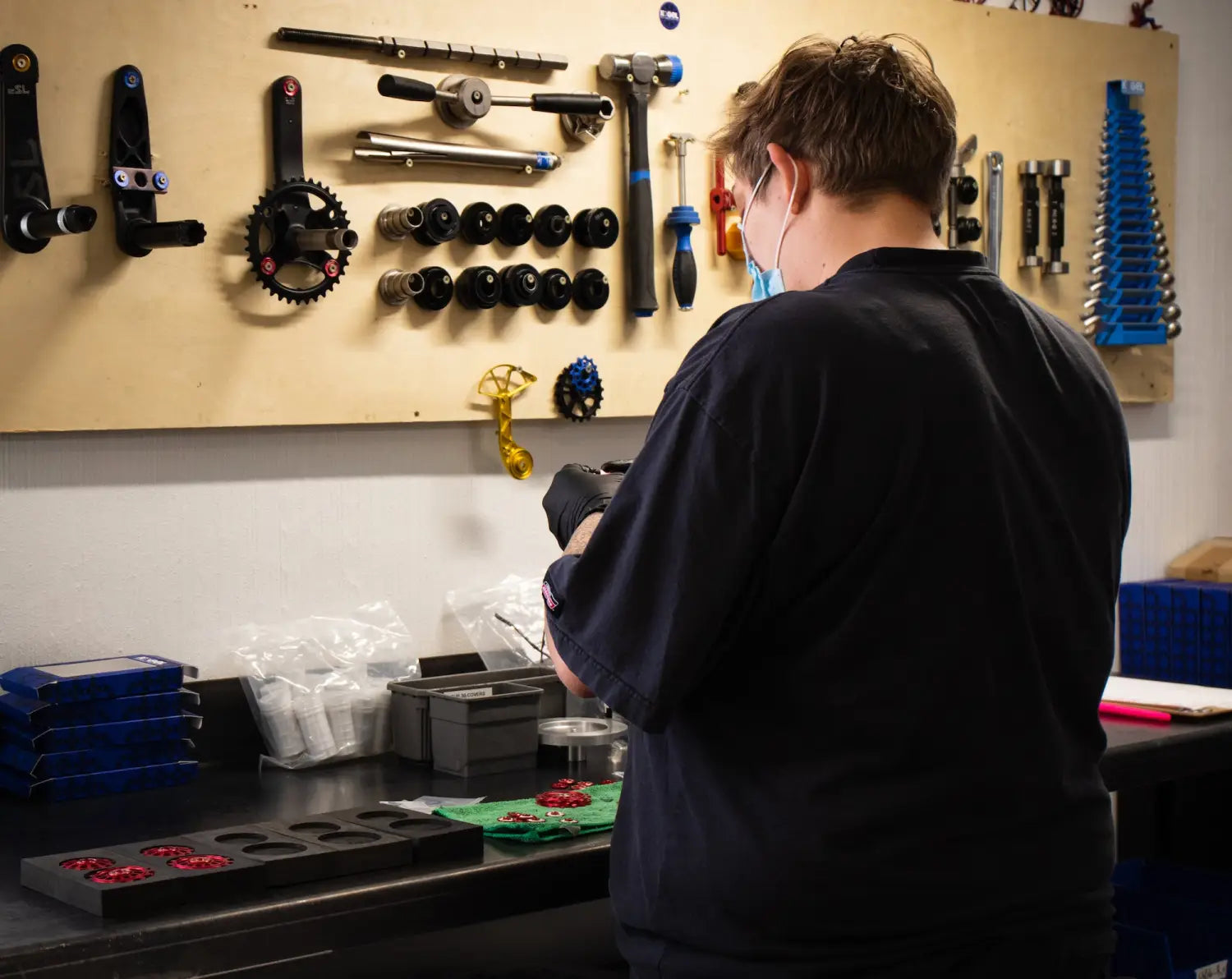When Bicycle Ball Bearings Fail
Ball bearings are a critical part of a bicycle. They are at the heart of every rotating part of your precious steed. Better ball bearings means you go faster, the science is so simple anyone can understand it.
But what happens when your ball bearings fail? The balls can be damaged, which means a steel ball will no longer be round, or a ceramic ball will break and usually gets pulverized inside the bearing. Not a huge problem, since there are plenty more balls in the bearing to compensate for the loss. You will make it home today.
The races or rings can be damaged too, which means the groove that the balls are running in is no longer smooth. Either it gets pitted from impact, ground to a wobbly mess because of asymmetric loads (usually the next step after the above ball failure) or rust will destroy the internals because of contamination.
The good news is that ball bearing failure is usually not critical. Unlike a handlebar or fork failure, you will be able to finish your ride with a broken ball bearing.
The downside though is that we often see that riders unaware their bearings are failing and who continue riding until everything is running in squares.

Preventing Bearing Failure From Installation
Failure can happen in the hands of your mechanic, before you even put the first mile on your fresh new bearings.
If your guy at the shop doesn’t have or know how to use the proper tools and drift sets, this can be a problem.
Especially if they decide to use an almost OK fitting socket to press in your new wheel bearings. In this situation, it is possible to transfer all the loads of the press to the internals, causing pitted races and a bumpy ride from the start.
Make sure your mechanic uses quality tools; consider even asking to see the press and exact fitting drifts for your wheel bearings.
If your service advisor or mechanic gets super defensive, that probably means the tools for this job are not available at the shop. Most mechanics I know love to show off their unique tools and talk about them.

Preventing Bearing Failure While Riding
Failure can also happen on your rides, usually not because of a single incident, more as a problem that gets ignored over time.
Bearing failure after a quality installation is usually because of contamination. For example, that epic super muddy gravel or MTB ride you went on where you and your bike looked like you’d ridden in a muddy river for a few miles. Not good.
Awesome! Love that you had this experience. Time to service your bearings! This is not your weekly wipe down, this is a full tear down, take off the covers, degrease and regrease the inside of the bearings kinda cleaning job.
Ignoring this service while your bearings are contaminated will cause the mud that entered behind your bearing seals to mix with the grease, turning it into a nasty grinding paste.
Bonus points if you leave your bike muddy for a week so all this ugly gunk can dry up and cause even more damage when you pick up your bike next weekend and start riding again.
Point is: make cleaning and servicing your bike part of your ride routine. Be honest with yourself, you know when your ride was a little dusty versus a mud fest. React accordingly.
Balancing Ball Bearing Efficiency with Reliability
Kogel Bearings is in the business of making people go faster with less energy. Low friction is good, lower friction is even better! Most of the time.
Every bearing is on a seesaw between lowest friction and best durability. The two typically act as opposites because of the seals (low pressure vs high pressure on the steel races) and lubrication (thin oil vs marine grade grease).
This is another moment to take a good look in the mirror and be honest: where do your rides take you? On a scale of pristine boards of an indoor velodrome to cyclocross in an ankle-deep muddy field, where do you ride?
Our hometown of El Paso Texas is in the desert and we deal with dust, but no mud. Low contact seals work fine, even on mountain bikes if you are willing to take care of your ride. My native country of The Netherlands gets 200 days of rain every year, the road rides can be muddy and the mountain bike routes will be muddy.
Wet conditions usually justify accepting a higher bearing friction in favor of durability.

Guaranteed Performance
At Kogel we strive to be the business that we would love to do business with. This is THE reason we offer the best products backed by the best warranty.
We make bearings for specific use in road and off road conditions to guarantee your ride is determined by the adventure of your choice, not by the limitation of your components.
Guaranteed Performance means that we will replace any failed items in the first year after purchase. This warranty is extended for another year after a bearing service which includes cleaning and regreasing and installation of a fresh set of seals.
No other bearing company will cover corrosion, but Kogel does. Ask yourself what you would prefer: two years of umbrella warranty or four years, six years, ten years of small print, loopholes and failure to register your products after purchase?
Because we want to keep our friends on the road using Kogel products, we even have a crash replacement program for the exceptions that do not fall under our warranty.
Let’s say you didn’t know that a hammer is not part of a bearing installation procedure or your bike fell off the car rack: we will take care of you with a discount so you can go back to focusing on riding.
So would now be a bad time to service your bearings? Download our bearing service guide; and if you have questions, give us a call. We always answer the phone during our business hours and are happy to answer your questions.
Best,
Ard

